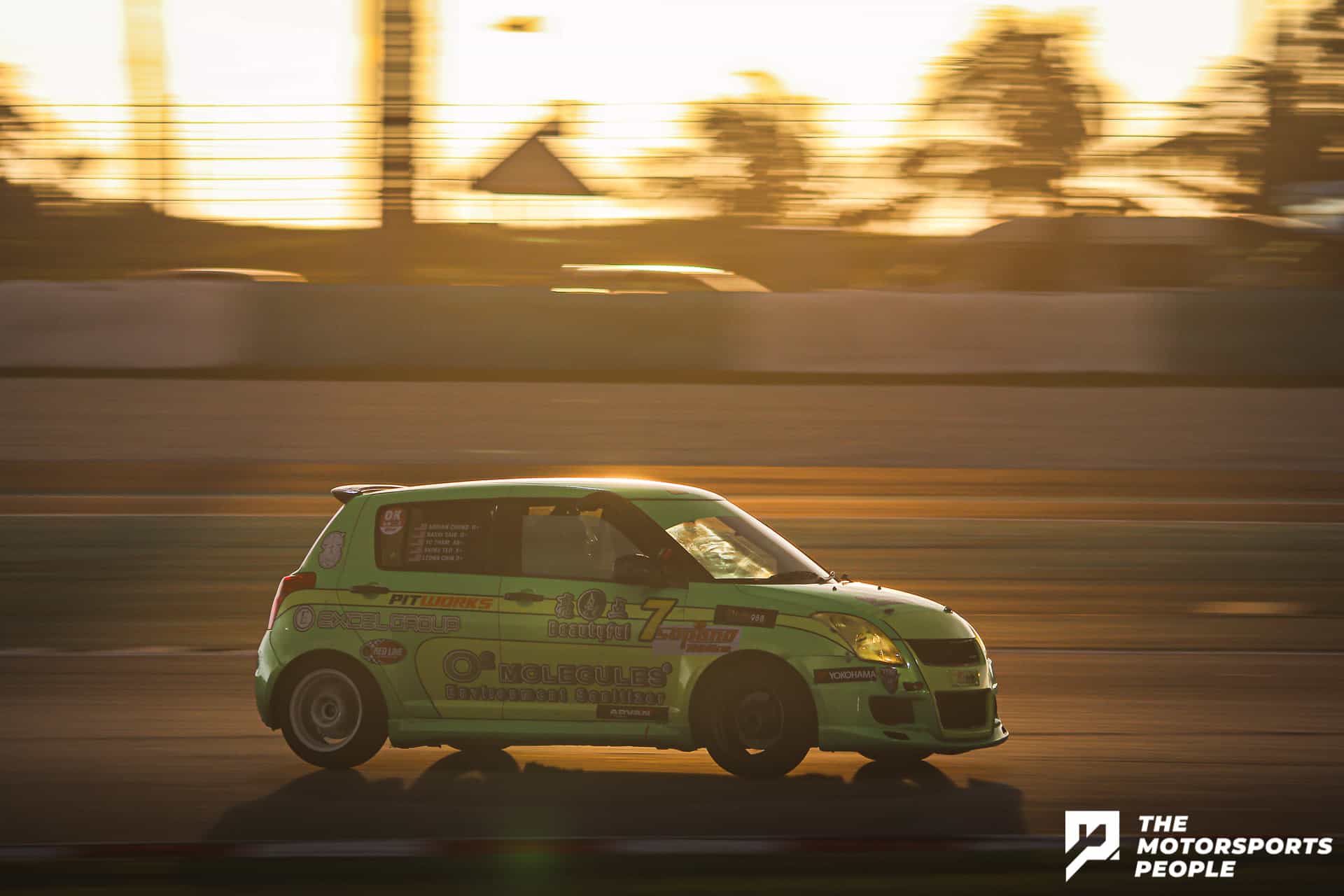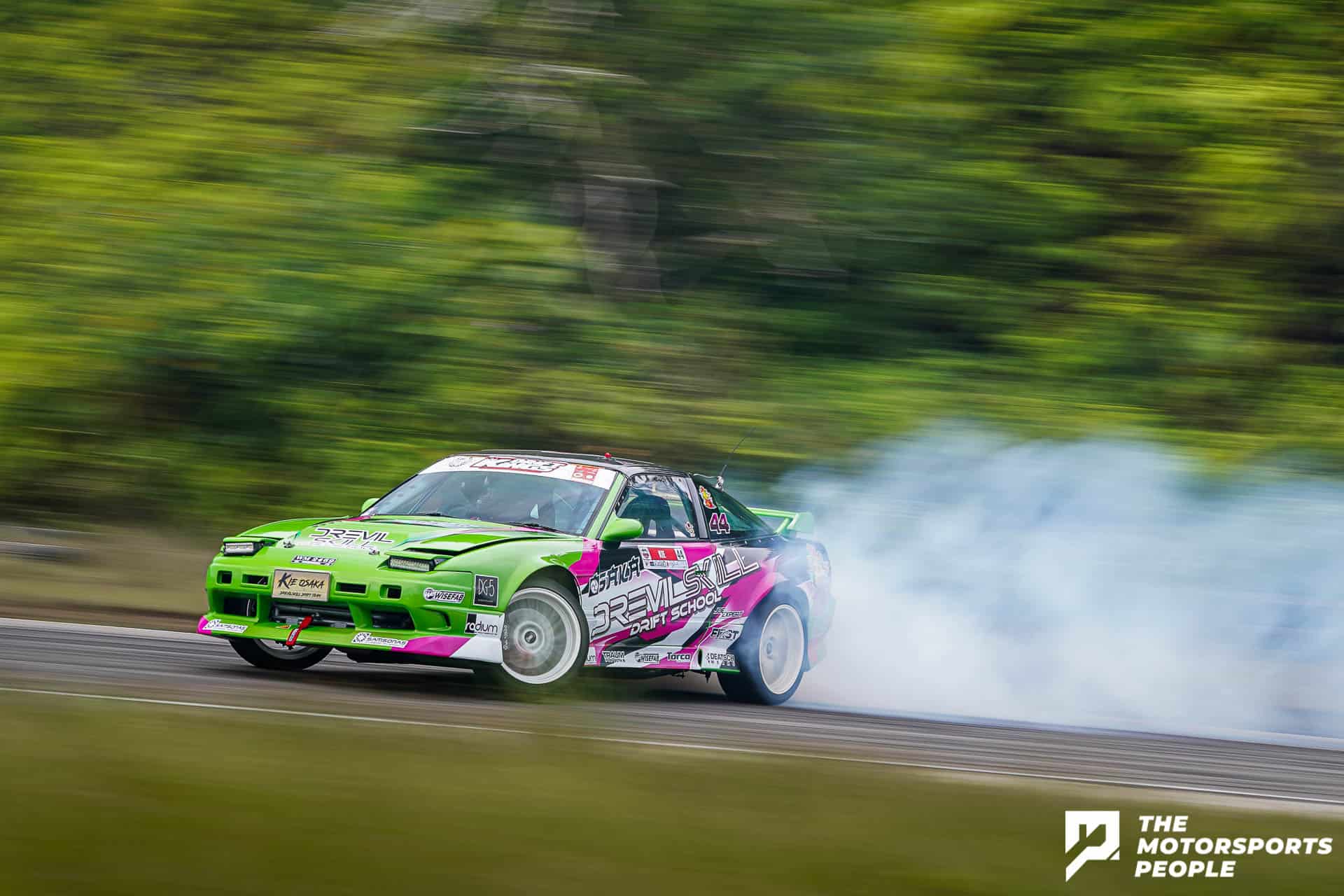
By November, most four-wheeled local racing series had already called it a day. Races like the Malaysia Championship Series, Malaysia Speed Festival, and also the Vios Challenge had already crowned their champions, but the time has yet to come for them to put the cars into hibernation or even hang their helmets. One final showdown awaits, one that is longer and tougher than the ones they have raced on throughout the whole season.
This is the Sepang 1000KM.

We have heard of teams and racers rave about the event. But honestly, what makes the Sepang 1000KM (S1K) so special? It is not a part of any championship series, so there are no additional points offered there. You do not even see a diverse class of vehicles being raced there as all of them are cars with 1600cc engines and below.


Did some of these questions linger in your mind? Then fret not, as we will try our best to give you a quick rundown of what is dubbed as “one of the biggest national racing events of the year”. Not our words, but from the two-time S1K winner, Tengku Djan Ley.
What is the S1K?


Like many big circuits around, most of them have their own version of endurance races. La Sarthe with the 24 Hours of Le Mans, Spa with the Spa 24, and Suzuka with the Suzuka 10 Hours. Unlike these circuits, Sepang’s own endurance race is not determined by duration, but is run by distance instead.


Of course, we once had the Sepang 12 Hours (aka the Malaysia Merdeka Endurance Race) race, but that is a story for some other day. The S1K is basically an avenue for smaller displacement cars to race in an endurance format, instead of sharing the track with faster, meaner machines like the GT3 and GT4s that ran in the Sepang 12 Hours.


The name itself is pretty much self-explanatory. The race takes place at Sepang International Circuit and runs for 1000kms, which equates to 181 laps, or somewhere in the range of eight to nine hours. To those not so familiar with Sepang, the circuit is a 5.543km FIA Grade 1 ribbon of tarmac with 15 corners, five to the left and ten right-handers.


The race started back in 2009 and is held annually ever since, with the exception of 2020 when COVID brought everything into a halt. It first started off in June, which then moved on to December from 2011-2014, and is held on November from 2015 until today. The race is usually flagged off at around noon, and ends in the region of 2100 hours.
The Cars

What exactly gave birth to the S1K in the first place? Like we mentioned earlier, the smaller capacity cars had a difficult time sharing the track with much faster cars on track. The competition in MMER also intensified over the years, with more serious and professional entries coming in, leaving little room for small, independent teams to participate.


To give them proper room to race, the S1K was born, with entries opening up to two classes of cars - the M-Production Car (MTC), and the Stock Production (SP2). To those familiar to the local racing scene, you might have heard of these classes participating in the Malaysian Championship Series, racing alongside the Touring Production (TP) and Stock Production 1 (SP1) classes at Sepang.

But unlike the TPs and SP1s which are cars with >1900cc engines like the Honda Civic FD2Rs and Toyota 86s, the MTCs and SP2s feature cars running with 1600cc engines. This is why the field running in the S1K are filled with cars like the Suzuki Swift, Honda Jazz, Proton Satria Neo, and the Toyota Yaris.


To the regular eyes, it is pretty hard to differentiate between the MTC and SP2 cars as they look almost indistinguishable. But generally, the MTCs are given more room for modification, as compared to SP2 which has a stricter set of rules. But one quick way to tell between these classes, the SP2 is the most stock looking where they are not allowed to delete or put additional body parts, while MTC allows parts like front and rear spoiler to be installed.
So those that looks like the car just rolled out of a showroom? SP2. It has some fancy bits like different side mirrors, a front or rear spoiler? MTC. (Keep in mind, not all MTC has extra aero parts, some look almost indistinguishable from their SP2 counterparts!)
But! Do not make the mistake of thinking that these cars are boring due to its small engine and it will not be able to put on a show on the track. Remember, it is not the ride, but the rider.
The Teams and Drivers
S1K is made big not only by the racing itself, but also from the teams and drivers that took part in the race. The support that the race gets spans more than just the privateer entries as it also gets some manufacturer support along the way.
You know the racing is going to be good when you have teams like Tedco Racing, Hi-Rev Dream Chaser, or even Wing Hin Motorsport fielding their entries in the race. Over the years, Honda Malaysia Racing Team and Toyota Gazoo Malaysia also gave strong support into the race. It is too bad that Proton R3 has been absent from the race. Not having them around is like not having Audi at Le Mans - it just feels odd for a team that won so many times to not be in it!

Since it is an endurance race, anything can happen and that means anyone can get a shot in winning the race. Do not believe us? Take a look at the 2021 edition. By running a clean and faultless race, the combination of Leona Chin, Akina Teo, Mohd Nasri and Tham Yik Choon took the overall win after many front runners failed to finish the race, as well as a penalty that had demoted the race winner into third place.

Since S1K is considered as the climax of four-wheeled racing in Malaysia, you can bet the big names in the game will appear as well. Living legends like Faidzil Alang, Keifli Othman, Lai Wee Sing, James Veerapen, Eddie Lew, and Farriz Fauzy regularly participate in the race. Some names like Tengku Djan, Syafiq Ali, Fariqe Hairuman and Aaron Lim are also ones to look out for as they have multiple wins under their belt!
But the S1K is more than just a place for them to shine. It is also the place for the young talents to show their worth, putting their name into the motorsport map and possibly be a stepping stone for them to advance in their career. Names like Mitchell Cheah and Hayden Haikal showed great talent and result in the race, as well as other youngsters like Putera Adam, Naquib Azlan, and Mika Hakimi.

A quick shoutout to the women who took part in the race as well, proving that they could perform just as well, or even better than their male counterparts in one of the toughest races in Malaysia! Nurul Husna, Nasharuddin, Natasha Seatter, Faye Kusairi, Angeline Lee, and Siti Shakirah are just some of the names we can pick from the top of our heads, but we are pretty sure there are more of them!
How to Catch or Watch the Race?

If you have things to do or live a bit far from Sepang, then worry not as they do stream the race live on Sepang Circuit’s Facebook and YouTube. However, if it is the raw sound and atmosphere that you crave, the grandstands are open to the public for free to spectate the race from start to finish! Can it get better than that?
Actually, yes.

For only RM106, you can get a paddock pass that allows you to roam at the back of the pits and access to the rooftop as well. Now that is an experience you do not always get.
Will the racing ever get boring? We doubt so as the closely matched machines will ensure plenty of action throughout the whole duration of the race. Who do you think will be crowned as the champion this year? Join the stream or follow us on Facebook and Instagram as we will be on the ground covering the event from start to finish!


